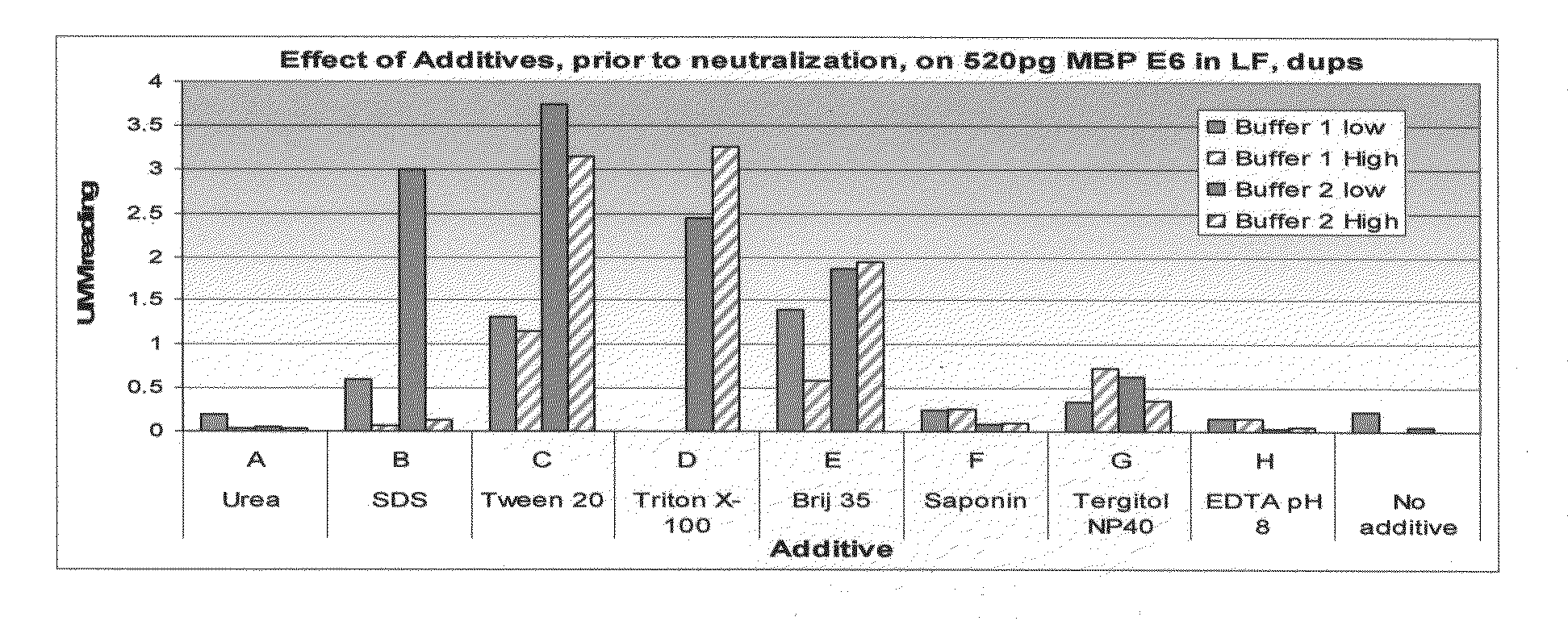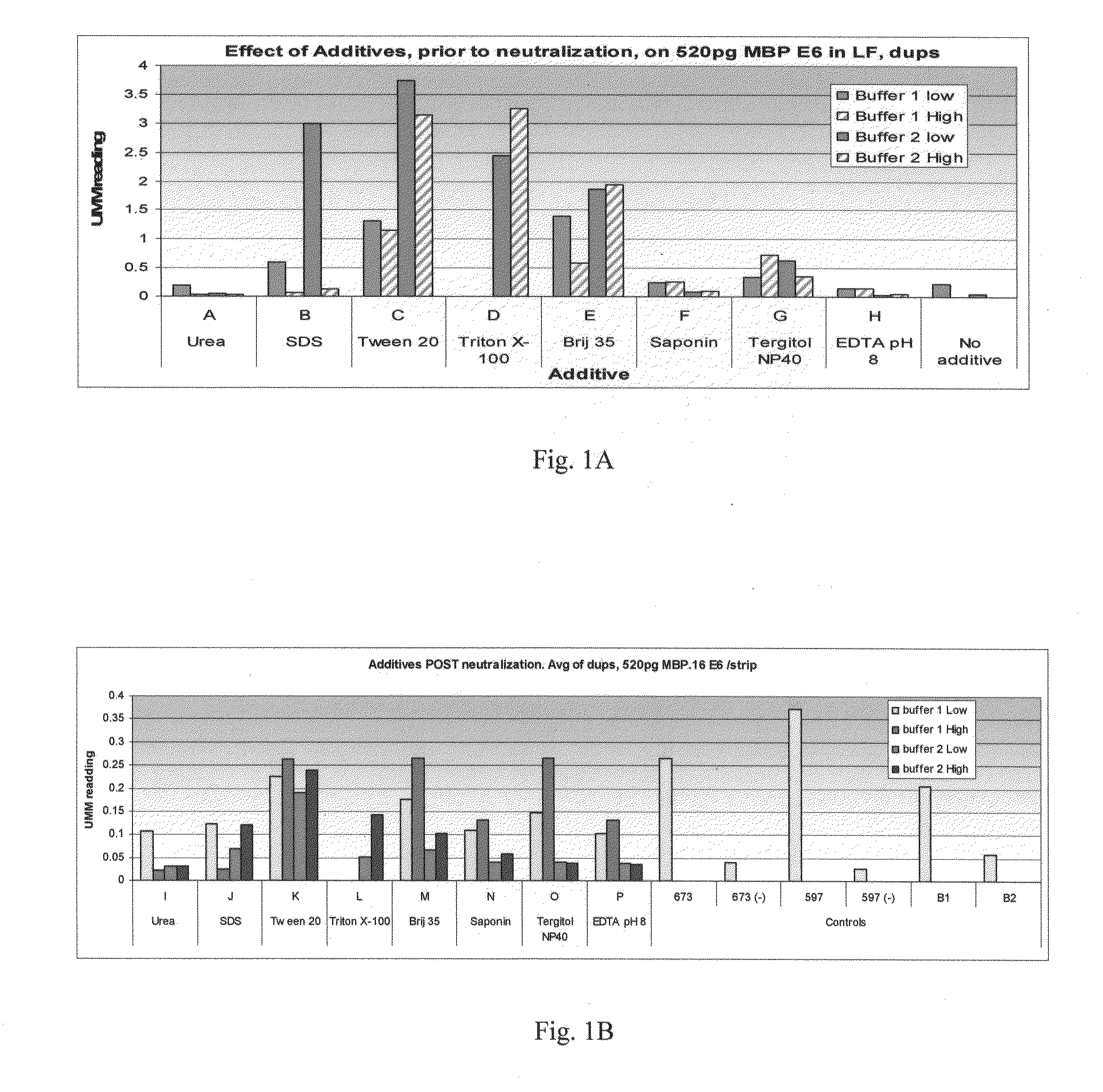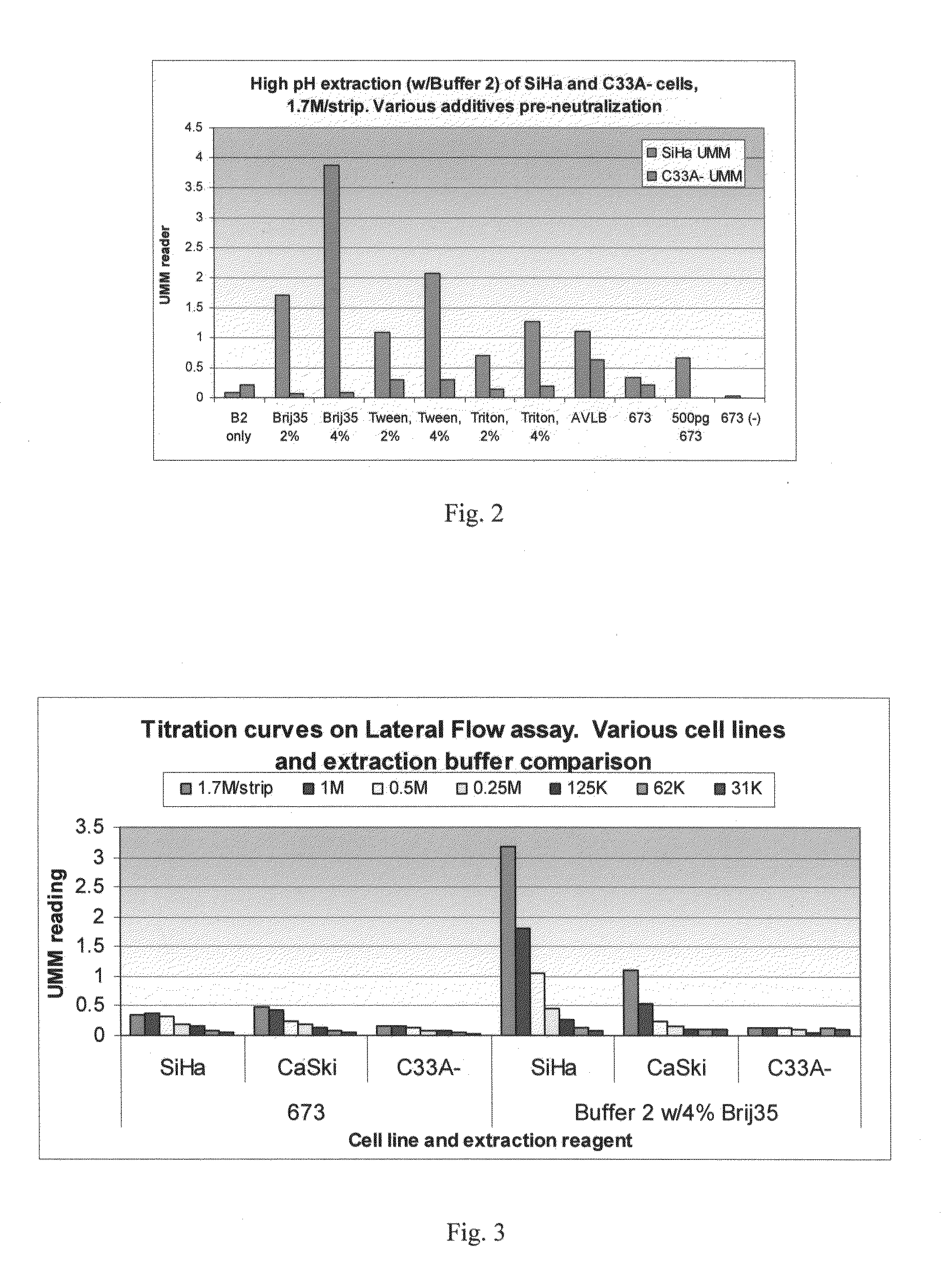Method of efficient extraction of protein from cells
a cell and protein technology, applied in the field of cell protein extraction, can solve the problems of false negative results, up to 40% of conventional pap tests are compromised, and tests are prone to errors
- Summary
- Abstract
- Description
- Claims
- Application Information
AI Technical Summary
Benefits of technology
Problems solved by technology
Method used
Image
Examples
example 1
Extraction of Spiked Clinical Samples
[0142]Cells transfected with the HPV16 E6 gene (C33A+) were fixed with THINPREP™ medium and added (i.e., “spiked”) into portions of the THINPREP™-fixed clinical samples as listed below. The cells were spiked into half of each of five clinical samples (each half clinical sample having 20 million C33A+ cells).
[0143]Extraction Scheme:
[0144]C33A(+) ThinPrep cells / 20M cells per ml
[0145]1-20M C33A(+) ThinPrep cells into ½ clinical negative #229 (1.0 ml extraction)
[0146]2-20M C33A(+) ThinPrep cells into ½ clinical negative #230 (1.0 ml extraction)
[0147]3-20M C33A(+) ThinPrep cells into ½ clinical negative #231 (1.0 ml extraction)
[0148]4-20M C33A(+) ThinPrep cells into ½ clinical negative #232 (1.0 ml extraction)
[0149]5-20M C33A(+) ThinPrep cells into ½ clinical negative #233 (1.0 ml extraction)
[0150]6-20M C33A(+) ThinPrep cells (1.0 ml extraction)
[0151]Extraction Reagent:
[0152]Triton X-100 / Lot 092K0171—(1%=250 ul)
[0153]5M NaCl / Lot 5701-53—(0.15M=750 ul)...
example 2
Effect of High pH Buffer Plus Additives on MBP-E6 Detection
[0209]The example described in FIG. 1 illustrates the effect of buffers of differing composition on the detection of recombinant maltose-binding protein (MBP)-E6 protein. Ordinarily, the extraction buffers described herein would be used to extract protein from cells. Here, however, previously-purified recombinant protein was used in order to optimize conditions. Briefly, the experiments described in FIG. 1A involved suspending the MBP-E6 protein in freshly-prepared extraction buffers differing in additive content and pH. This “extraction” step was followed by a neutralization step in which the pH of the sample was adjusted to a neutral pH. MBP-E6 protein was then detected using a lateral flow assay.
[0210]Composition of the Buffers
[0211]The buffers used in the experiments described herein were derived from one of two buffers, either a lower pH buffer, “Buffer 1” or a higher pH buffer, “Buffer 2.” Buffer 1 (pH of about 11.5) c...
example 3
Effect of Additives on the Extraction of E6 Protein From Cells
[0226]The example illustrated by FIG. 2 evaluated the effect of different percentages of buffer additives on the extraction of E6 protein from cells. In this example, protein was extracted either from SiHa cells expressing the HPV16 E6 gene or from C33A-cells, which are a non-HPV infected cervical cancer cell line.
[0227]Extraction Step
[0228]For the extraction step, cell pellets containing about 10 million cells were first removed from a −80° C. freezer and allowed to thaw at RT for about 10 minutes. Then, about 750 μl of Buffer 2, described in Example 2, was added to most of the samples. Additives such as Brij™ 35, Tween™-20, or Triton™X-100 were also introduced to the indicated samples. These additives were present at a final concentration of either 2% or 4% (v / v). As a control, some samples were extracted with Buffer 673, a neutral pH buffer containing 20 mM Tris pH 8, 2% BSA, 1% Triton™-X 100, 2% Tween™-20, 0.2% Sarcos...
PUM
| Property | Measurement | Unit |
|---|---|---|
| pH | aaaaa | aaaaa |
| pH | aaaaa | aaaaa |
| pH | aaaaa | aaaaa |
Abstract
Description
Claims
Application Information
 Login to View More
Login to View More - R&D
- Intellectual Property
- Life Sciences
- Materials
- Tech Scout
- Unparalleled Data Quality
- Higher Quality Content
- 60% Fewer Hallucinations
Browse by: Latest US Patents, China's latest patents, Technical Efficacy Thesaurus, Application Domain, Technology Topic, Popular Technical Reports.
© 2025 PatSnap. All rights reserved.Legal|Privacy policy|Modern Slavery Act Transparency Statement|Sitemap|About US| Contact US: help@patsnap.com



